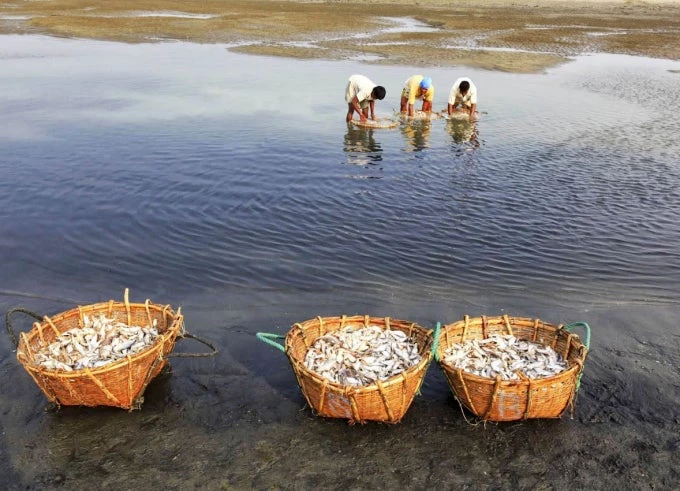
In the second in this series of blogs, we highlighted the need to introduce adaptive delta management to the Bangladesh delta. The reason—to manage the long-term risks facing the Delta by investing in adaptive and flexible, short-term activities. The most striking need for this approach is climate change, which unchecked will undermine Bangladesh’s many development gains.
More than 160 million people live in the Bangladesh Delta and depend on its unique characteristics for their lives and livelihoods. What makes the Delta distinctive also makes it highly vulnerable—sediment loading, industrialization, population growth, saltwater intrusions, floods, erosion, subsidence, and drought. These weaknesses are further exacerbated by the threat of future changes to the climate, which are expected to increase the risk of extreme weather related impacts—floods, droughts, storm surges, coastal erosion and so on. Bangladesh is rated the 6th most vulnerable nation to climate change in the Global Climate Risk Index 2015. [1].
Its location at the tail end of the delta formed by the Ganges, Brahmaputra, and Meghna river systems, coupled with high levels of poverty and population density, makes the country highly vulnerable to the climate change impacts. The 2014 Climate Change Vulnerability Index[2] ranks Bangladesh the number one economy at risk to climate change, which is largely determined by the difficulties coping with the current climate.
Two thirds of the country is less than five meters above sea level and therefore susceptible to sea level rise as well as tidal flooding during storms. Sea level rise is likely to inundate 18 percent of Bangladesh’s total land, directly impacting 11 percent of the population. By, 2080, sea level rise is projected to increase by 65 cm. Inundation will be deeper, more widespread, and will affect millions more. If seas rise by 50 cm, a 1-in-100 year coastal flood around 2070 would affect more than 11 m people in Dhaka alone.[3] Salt water intrusion from sea level rise in low lying plains could lead to food insecurity, further spread water-related diseases, and reduce freshwater supplies[4].
The retreat of glaciers of the Himalaya will directly impact the Bangladesh delta threatening water supplies. Flood risk will increase in the short-term. There will be no replacement for the water provided by glaciers, which will likely result in long term freshwater shortages. Agriculture and the economic structure of the Delta will need to undergo significant adjustments. In the southwest coastal region of Bangladesh, 2.5 million of the poorest people already suffer from shortages of drinking water, scarcity of water for irrigation for dry-season agriculture, and significant changes in the coastal aquatic ecosystems. By 2050, an estimated number of poor affected will increase by between 2.9 million and 5.2 million[5].
Despite efforts to increase resilience, climate challenges continue to result in large economic losses — reducing economic growth and slowing progress in reducing poverty. The country was affected by 228 weather-related hazards between 1994 and 2013, resulting in losses of US$ (PPP) 3128.8m or 1.2% GDP averaged over this period. Losses caused by specific events have a disproportionately large impact on the economy and individual livelihoods. Cyclone Sidr, for example, resulted in damages of US$1.7 billion, or 2.6% of GDP in 2007. About half the losses were in the housing sector, followed by agriculture and infrastructure[6]. In May 2009, Cyclone Aila affected 3.9 million people with an estimated damage of assets of US$270 million.[7]
The ability to cope with the future climate will largely be determined by actions that strengthen the current capacity of Bangladesh to handle existing weather related hazards. This is not an easy task, but one that needs to be addressed within the framework of Adaptive Delta Management.




Join the Conversation